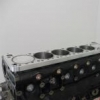Rb34 / 24U (Rb26 + 800Cc) - Project RB high deck engine (and related builds)
Announcements
-
Latest Posts
-
found this on the forum , suggests I am in the range ----------------------------- From the segmented (potentially incorrect) information I've found that; Early R32: RB26000XXXX to RB26002XXXX Mid R32: RB26003XXXX (V-Spec I RB26-03XXXXX - Reference Classic Register) Late R32: RB26004XXXX (V-Spec II RB26-042XXXX - RB26-045XXXX - Reference Classic Register) Early R33: RB26005XXXX Mid R33: RB26006XXXX (as per the engine in this R32 V-Spec II, which is what I'm concerned about from legitimacy perspective) Late R33: RB26007XXXX Early R34 (2000+): RB26008XXXX ----------------------
-
Now as I understand it the engine numbers are sequential for the rb26. EG stamped - RB26040100A is a 40,100 engine. Now they made between 1988 and 1994 43,834 R32 GTR's In 1994 they made 7,464 r32 gtr's. So if you have a ~37,000++ number RB26 it's "safe" ish to assume its an 1994 motor and a long nose crank ? The long nose crank being introduced somewhere in Feb of 1993.
-
By dawhitehonky · Posted
Try Christian from ITSROM. He should be able to help with a modified ECU. Itsrom | Facebook or you can send him an email on itsrom AT outlook.com -
what exhaust, intercooler, turbine housing? I don't get this part ngk 7’s spark plugs (tuner refused to tune with 8’s for my car) why is the keyboard operator telling you what parts go in your car comes of as controlling, controls your engine, your tune, your horsepower.
-
By Dose Pipe Sutututu · Posted
Looks good man, at this rate everyone will have running cars before me lol.
-



.thumb.jpg.1b7f9b555236b5ea56c3fed20c733de8.jpg)


Recommended Posts
Create an account or sign in to comment
You need to be a member in order to leave a comment
Create an account
Sign up for a new account in our community. It's easy!
Register a new accountSign in
Already have an account? Sign in here.
Sign In Now